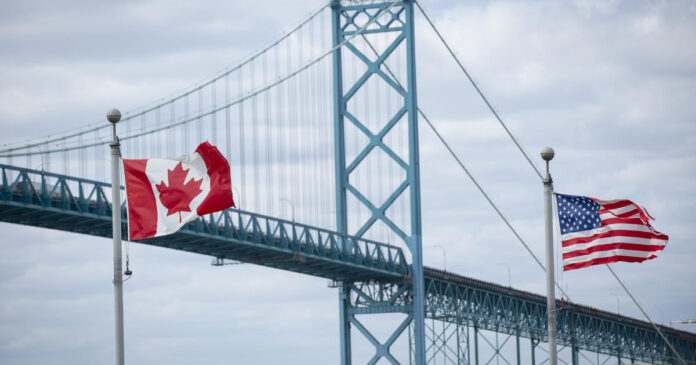The United States and Canada have forged a deal that will allow both countries to turn away larger numbers of asylum-seekers as illegal border crossings along their shared border have increased over the past year, two U.S. officials told CBS News on Thursday.
The deal, which is due to be officially announced Friday during a meeting between President Biden and Prime Minister Justin Trudeau in Ottawa, will be a dramatic extension of a 2004 deal that allowed American and Canadian border officials to send some asylum seekers across the border between the US and Canada on the premise that both nations are safe countries where migrants can seek humanitarian refuge.
For the past two decades, the so-called “Safe Third Country” agreement between the two nations has only applied at official border crossings, meaning that American and Canadian authorities could not turn away asylum seekers who entered their respective countries illegally.
Click here to view related media.
Click to expand
But under the deal brokered this week, the deal will apply to migrants crossing the U.S.-Canada border between official border crossings, a change Canadian officials have long been pushing for, the two U.S. officials said, asking not to be identified to discuss the agreement prior to its formal announcement.
The Canadian Broadcasting Corporation first reported details of the new agreement on Thursday. As part of the deal, Canada will also commit to legally accepting 15,000 migrants from the western hemisphere over the next year, one of the US officials said.
While the updated agreement will improve both countries’ ability to reject asylum seekers in the face of unprecedented levels of migration, it will arguably benefit the Canadian government the most, as the country has seen a much larger number of illegal border crossings into its territory from the US in recent years.
Nearly 40,000 asylum-seekers entered Canada without permits in 2022, the vast majority of them along an unofficial intersection called Roxham Road, which connects New York to the province of Quebec, Canadian government figures show. Another 9,500 migrants entered Canada in January and February alone.
In contrast, border police processed 3,577 migrants who entered the United States illegally from Canada in 2022, according to government data. While illegal entries into the US along the northern border have increased in recent months, rising to 628 in February, they remain far below migration rates along the southern border, where thousands of migrants are processed daily.
US law allows the government to deport asylum-seekers to third countries if it determines those countries offer a “full and fair process” for migrants to seek sanctuary. The deal with Canada is the only secure third country deal currently enforced by the US. Similar deals with Guatemala, Honduras and El Salvador under former President Donald Trump have been scrapped by the Biden administration.
Amid mass migration in the Western Hemisphere and record-breaking arrests of migrants along the border with Mexico, the Biden administration has increasingly sought to restrict access to the overwhelmed US asylum system.
Early January, Mr. Biden extended the scope of a restriction during the pandemic along the southern border known as Title 42, adding Cuba, Haiti, Nicaragua and Venezuela to the list of countries whose citizens may be deported to Mexico if they enter the US illegally. The government plans to replace Title 42, which is due to expire in early May, with a rule barring most non-Mexican migrants who cross the southern border illegally from asylum.
Efforts to discourage illegal crossings have been combined with expanded ways for migrants to enter the US legally, including a mobile app for vulnerable asylum seekers in Mexico and a funding program This allows up to 30,000 migrants from Cuba, Haiti, Nicaragua and Venezuela to fly to the United States every month.
The revised US strategy has so far resulted in a sharp drop in illegal crossings along the southern border, but officials expect migrant arrivals to pick up in the spring after Title 42 is repealed.
More Camilo Montoya Galvez















